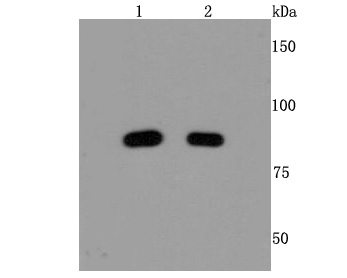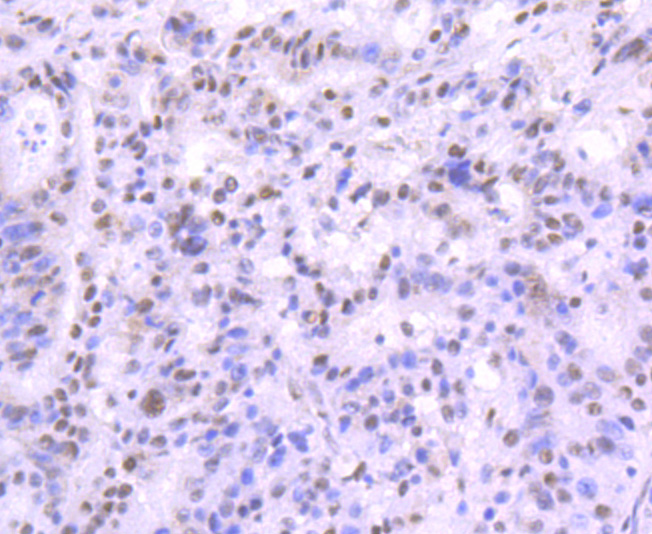Product Detail
Product NameMre11 Rabbit mAb
Clone No.JM11-18
Host SpeciesRecombinant Rabbit
Clonality Monoclonal
PurificationProA affinity purified
ApplicationsWB, IHC
Species ReactivityHu, Ms, Rt
Immunogen Descrecombinant protein
ConjugateUnconjugated
Other NamesAT like disease antibody
Ataxia telangiectasia disorder like antibody
ATLD antibody
DNA recombination and repair protein antibody
Double strand break repair protein MRE11A antibody
Double-strand break repair protein MRE11A antibody
endo/exonuclease Mre11 antibody
HNGS1 antibody
meiotic recombination (S. cerevisiae) 11 homolog A antibody
Meiotic recombination 11 homolog 1 antibody
meiotic recombination 11 homolog A (S. cerevisiae) antibody
Meiotic recombination 11 homolog A antibody
MmMRE11A antibody
Mre 11 antibody
MRE 11a antibody
MRE 11b antibody
MRE11 homolog 1 antibody
MRE11 homolog A antibody
MRE11 meiotic recombination 11 homolog A (S. cerevisiae) antibody
MRE11 meiotic recombination 11 homolog A antibody
MRE11_HUMAN antibody
MRE11A antibody
MRE11b antibody
OTTHUMP00000236830 antibody
OTTHUMP00000236831 antibody
OTTHUMP00000236832 antibody
OTTHUMP00000236833 antibody
Accession NoSwiss-Prot#:P49959
Uniprot
P49959
Gene ID
4361;
Calculated MW81 kDa
Formulation1*TBS (pH7.4), 1%BSA, 40%Glycerol. Preservative: 0.05% Sodium Azide.
StorageStore at -20˚C
Application Details
WB: 1:500-1:1,000
IHC: 1:50-1:200
Western blot analysis of Mre11 on different cells lysates using anti-Mre11 antibody at 1/500 dilution. Positive control�� Line 1: 293T Line 2: Hela
Immunohistochemical analysis of paraffin-embedded human breast cancer tissue using anti- Mre11 antibody. Counter stained with hematoxylin.
Immunohistochemical analysis of paraffin-embedded human stomach cancer tissue using anti- Mre11 antibody. Counter stained with hematoxylin.
Component of the MRN complex, which plays a central role in double-strand break (DSB) repair, DNA recombination, maintenance of telomere integrity and meiosis. The complex possesses single-strand endonuclease activity and double-strand-specific 3'-5' exonuclease activity, which are provided by MRE11. RAD50 may be required to bind DNA ends and hold them in close proximity. This could facilitate searches for short or long regions of sequence homology in the recombining DNA templates, and may also stimulate the activity of DNA ligases and/or restrict the nuclease activity of MRE11 to prevent nucleolytic degradation past a given point. The complex may also be required for DNA damage signaling via activation of the ATM kinase. In telomeres the MRN complex may modulate t-loop formation.
If you have published an article using product 49512, please notify us so that we can cite your literature.





 Yes
Yes



